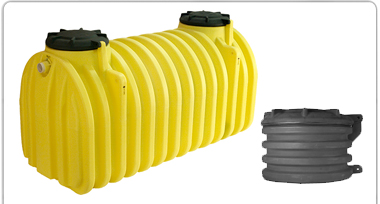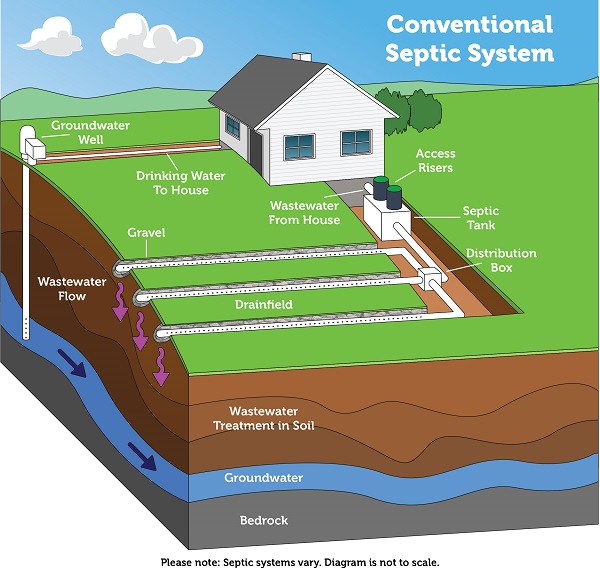Decoding the Language of Septic System Providers: A Glossary of Terms for Clear Interaction and Recognizing
In this article, we'll assist you translate the language of septic storage tank solutions with a handy glossary of terms. From comprehending the basics of your septic container to dealing with sludge accumulation, we'll supply clear explanations to ensure clear interaction and understanding.
Sewage-disposal Tank: Understanding the Fundamentals

If you are unknown with septic storage tanks, they are underground containers that hold and treat wastewater from your household. These tanks are an important part of your home's plumbing system, in charge of securely and successfully handling the waste generated by your daily tasks. Recognizing the essentials of septic systems is essential in order to guarantee their proper functionality and avoid costly repairs.
A sewage-disposal tank is composed of two primary elements: the storage tank itself and the drainfield. The storage tank is where the wastewater streams into, and it is made to divide solids from liquids. The solids resolve at the base of the tank, creating a layer of sludge, while the fluids, called effluent, surge to the top. The effluent then flows right into the drainfield, where it is additional treated and distributed into the bordering soil.
Routine upkeep of your sewage-disposal tank is necessary to stop issues such as blockages, backups, and system failings. It is advised to have your storage tank pumped every 3 to five years, depending upon its size and usage. In addition, it is essential to be mindful of what you purge away and commodes, as certain chemicals and materials can damage the bacterial balance in the container.
Drain Area: The Duty of Soil in Garbage Disposal
To keep the proper performance of your sewage-disposal tank system, it is vital to understand the function of the drainpipe area in waste disposal and exactly how the bordering soil plays a crucial duty in this process. The drain area, additionally known as the leach field or absorption area, is an essential element of a septic tank. Its key feature is to filter and treat the wastewater that spurts of the sewage-disposal tank.
As soon as the wastewater leaves the septic tank, it is distributed uniformly throughout the drainpipe area through a network of trenches or pipelines. The drainpipe field consists of a layer of crushed rock or rock, which aids to distribute the wastewater uniformly and advertise efficient purification. Below the gravel layer, there is a layer of soil that functions as an all-natural filter.
The soil in the drain field plays an essential function in the treatment of wastewater. As the wastewater percolates with the soil, it goes through a natural process of filtering and filtration. The dirt acts as a biological and physical filter, eliminating hazardous bacteria, viruses, and other pollutants from the wastewater.
The composition and top quality of the soil are vital for the efficient performance of the drainpipe area - septic tank pumping. The soil ought to have good percolation prices to permit the wastewater to relocate with it easily. Additionally, the dirt should have sufficient oxygen degrees to sustain the growth of aerobic microorganisms, which help in the malfunction of raw material in the wastewater

Effluent: the Liquid Waste From Your Septic Tank
As the wastewater leaves the drain area, it is called effluent, and it is essential to recognize the qualities and monitoring of this liquid waste from your septic tank. Effluent is the term used to explain the cured wastewater that spurts of your septic tank and into the drainpipe area. septic tank pumping. This fluid waste consists of a mix of water, organic issue, and dissolved solids
Effluent must be cost-free and clear of any type of unpleasant odors. If you see any foul scents or staining, it could be an indication of a trouble with your septic system. Normal maintenance and pumping of your sewage-disposal tank can assist make certain that the effluent continues to be cost-free and clean from pollutants.
Appropriate administration of effluent is important to protect against contamination of the surrounding atmosphere. The drainpipe field is designed to filter and deal with the effluent before it enters the dirt. It is very important to avoid any kind of activities that could possibly damage the drainpipe field, such as vehicle parking vehicles or growing trees with deep root systems.
Sludge: Dealing With Strong Waste Buildup
When managing solid waste build-up in your septic system, correct administration of sludge is important. Sludge describes the thick layer of solid waste that accumulates at the end of your septic tank gradually. If not managed correctly, sludge can trigger different problems, such check my source as clogging, backups, and also system failure.
Regular maintenance is crucial to avoid sludge buildup. It is suggested to have your septic system pumped every three to 5 years, depending upon the size of your home and the container's capacity. Pumping eliminates the gathered sludge, allowing your septic system to operate about his efficiently.
Along with routine pumping, there are a couple of steps you can take to lessen sludge build-up. Be conscious of what you flush down the drain. Stay clear of taking care of non-biodegradable items, such as paper towels, diapers, and hygienic items. These can contribute to sludge accumulation. Second, think about making use of septic-safe items that won't disrupt the all-natural microbial balance in your system.
Pumping: Maintaining the Health And Wellness of Your Septic System
Preserve the health of your septic system by regularly pumping it. Pumping is a vital maintenance task that assists avoid troubles and makes sure the correct functioning of your septic tank. Over time, solid waste and sludge gather in the tank, which can lead to clogs, back-ups, and also system failing. Pumping eliminates these collected solids, enabling the storage tank to continue operating successfully.
Regular pumping is advised to protect against the sludge from getting to high levels. The regularity of pumping relies on different elements such as the dimension of the container, the number of occupants in your household, and the use of water. Typically, sewage-disposal tanks should be pumped every 3 to five years. However, it is very important to keep More Info in mind that every system is unique, and it's ideal to seek advice from a professional to establish the ideal pumping schedule for your details circumstance.
Final Thought
So there you have it: a handy glossary of terms to help you better comprehend the language of septic storage tank services. Whether it's discovering regarding the essentials of septic storage tanks, recognizing the function of the drainpipe area, or knowing exactly how to manage sludge buildup, this reference will certainly ensure clear communication and a far better understanding of your septic tank. Keep these terms in mind to preserve the health and wellness and capability of your septic tank.
A septic storage tank is composed of 2 major components: the storage tank itself and the drainfield.Normal upkeep of your septic tank is necessary to prevent issues such as blockages, back-ups, and system failings.To keep the correct capability of your septic tank system, it is important to comprehend the duty of the drainpipe area in waste disposal and just how the bordering dirt plays a vital role in this process. It is recommended to have your septic tank pumped every three to five years, depending on the size of your household and the tank's capacity. Whether it's learning about the basics of septic storage tanks, comprehending the function of the drain field, or knowing how to deal with sludge buildup, this glossary will certainly make certain clear interaction and a far better understanding of your septic system.